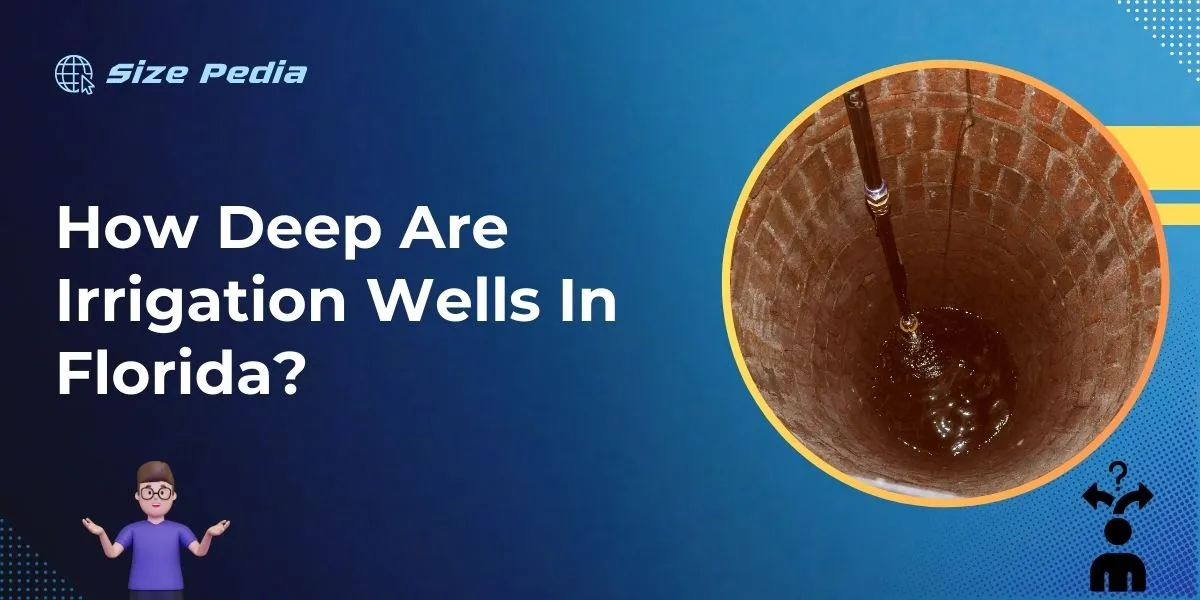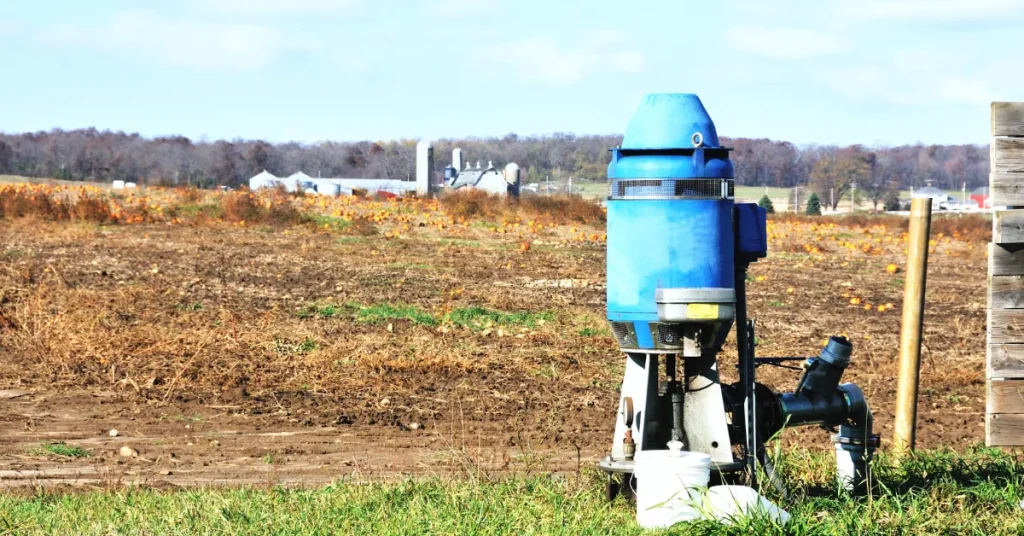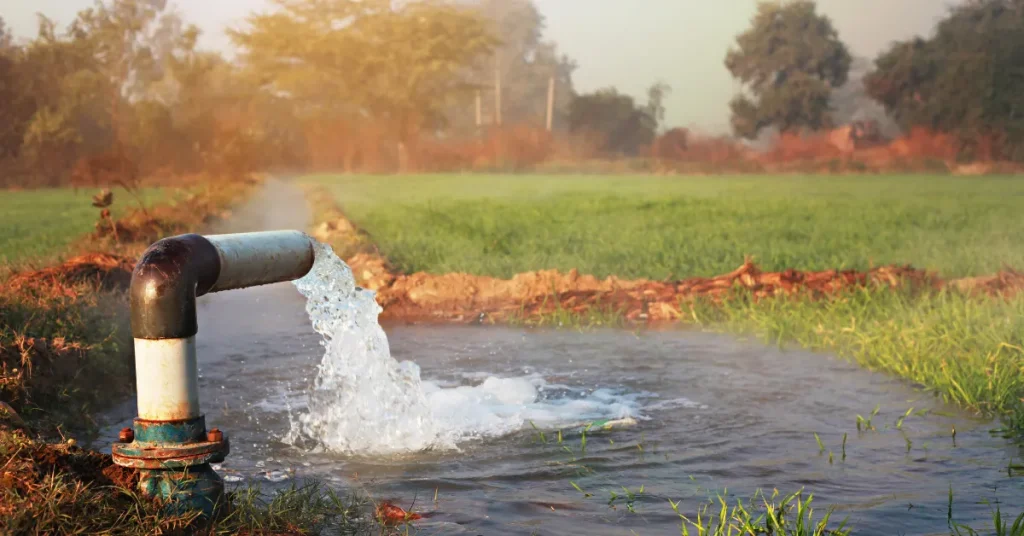Irrigation wells in Florida typically range from 30 to 400 feet deep. The depth largely depends on the local aquifer’s characteristics and the water table level.
Delving into the topic of irrigation wells in Florida, it’s important to recognize the state’s unique geography and water systems. Florida is home to a diverse array of aquifers, which serve as the primary source for irrigation wells.
These underground layers of water-bearing permeable rock or unconsolidated materials can vary greatly in depth across the state, impacting the wells that tap into them.
Farmers and property owners must consider their local geology and water needs when determining the depth of their irrigation wells. This ensures efficient access to groundwater for agricultural and landscaping purposes.
Navigating through the regulations and environmental considerations, including potential impacts on the ecosystem, is a vital aspect of planning and constructing a well in Florida.
Equipped with the right depth, Florida’s irrigation wells can efficiently sustain agriculture and maintain lush landscapes even during periods of insufficient rainfall.

Plumbing The Depths: Florida’s Irrigation Wells
Digging into the world of Florida’s irrigation wells reveals a complex system vital for the state’s lush landscapes and thriving agriculture.
This intricate network lies beneath the sunny surface, spanning miles and reaching various depths to tap into Florida’s aquifers.
Gauging The Basics: What Are Irrigation Wells?
Irrigation wells are the hidden heroes of Florida’s rich agricultural sector, providing essential water to keep crops flourishing under the Floridian sun.
They’re custom-built to meet the specific needs of the terrain and the water demands of different crops. Understand these wells through their main components:
- Casing: the tube that keeps the well open and protects the water from contamination,
- Pump: the device that moves water from the ground to where it’s needed,
- Pipe system: the network distributing water across fields.
Florida’s Agriculture: A Thirst For Water
In Florida, the agricultural industry relies heavily on irrigation systems. The state’s farms stretch over 9.7 million acres, and all these lands need consistent watering to thrive.
Each plant has unique water needs, influencing the depth and capacity of the irrigation wells required. The depth of an irrigation well in Florida often depends on:
| Factor Influencing Well Depth | Typical Depth Range |
| Soil Type | 20-100 feet |
| Water Table | 100-300 feet |
| Plant Types | Varies |
Some wells may dip a mere 20 feet for shallow root systems, while others may go beyond 300 feet to reach deeper aquifers for large-scale farming.
Peering Below The Surface: Deep Vs. Shallow Wells
In Florida, unseen beneath our feet lies a secret to successful agriculture and lush lawns: wells. Every well taps into Florida’s aquifers at differing depths to access fresh water. Understanding deep and shallow wells is critical.
It’s a tale of two strategies for harnessing precious water—the lifeblood of the region’s greenery.
Comparing Well Types: Benefits And Drawbacks
The duel of deep and shallow wells is a study of contrasts. Each serves its role, unique in its own right. Here’s a quick comparison:
| Well Type | Benefits | Drawbacks |
| Shallow Wells | Cost-effective to constructLess complex to maintainSuits smaller water demand | More susceptible to contaminationDependent on seasonal water table changes |
| Deep Wells | Access to more consistent water supplyGenerally cleaner, less polluted water | Higher initial investmentMore complex pumps and filtration |
Regional Differences In Well Depth
Florida’s geology influences well depths. The north harbors shallower aquifers, while the south commands deeper sources. Here’s what impacts well depth across regions:
- Geology: Affects how deep water resides.
- Water Table: Varies with seasons and rainfall.
- Usage: High demand may require deeper wells.
In summary, shallow wells suit small-scale use. Deep wells fetch water from farther down, providing plentiful supply. Various Florida regions dictate whether to dig deep or stay shallow.
Digging Deeper: Factors Affecting Well Depth

Deciding on the depth of an irrigation well in Florida is no shallow task. It requires careful consideration of several key factors. These ensure the well provides a reliable water source while also remaining sustainable for years to come.
The Role Of Geography And Geology
Geography and geology have direct roles in determining well depth. The type of terrain informs which layers of soil and rock are present. Florida’s diverse geology, from the Panhandle to the Keys, affects well excavations.
In areas with many limestone formations, for instance, deeper wells might be necessary. These penetrate the porous limestone to tap into steady aquifers below.
Assessing Water Table Levels
Evaluating the water table levels is vital for well placement. In Florida, these levels can vary greatly due to seasonal changes and regional climate. Wells must access the water table at its lowest to ensure year-round water.
This means digging past the fluctuating zone to a level where water is continually available. Professional assessments are crucial for this step.
Together, geography, geology, and water table levels paint a detailed picture for irrigation well depths. Knowledgeable drilling aligns with these factors to provide optimal performance.
Thus, investing in a professional evaluation before drilling is essential. It guarantees water access and avoids unnecessary expenses or environmental harm.
The Integration Of Technology In Well Drilling
The Integration of Technology in Well Drilling has revolutionized how we access water in Florida. Modern irrigation wells reach deep beneath the surface, tapping into vital water sources.
With ground-breaking advancements, these wells ensure sustainable water management for agriculture and communities alike.
Advancements In Drilling Techniques
Drilling techniques have seen significant changes over the years. The advent of precision drilling technology means wells reach the needed depths efficiently. Today, drills can navigate the diverse Floridian underground terrain with unprecedented accuracy.
- Rotary drills cut through rock layers with speed.
- Directional drilling allows for minimal land disruption.
- Sonic drilling uses high-frequency vibration to penetrate soil.
Innovations In Well Monitoring And Sustainability
Monitoring is key to a well’s longevity and sustainability. State-of-the-art sensors now track water levels and quality in real-time.
| Tech Feature | Benefits |
| Automated Sensors | Offer constant data on well conditions |
| Remote Monitoring | Allows for adjustments from afar |
| Data Analytics | Predicts issues for preemptive maintenance |
Together, these innovations ensure Florida’s wells remain a reliable water source. Farmers and residents depend on this technology for daily water needs.
Regulatory Frameworks Governing Well Depths

Regulatory Frameworks Governing Well Depths play a significant role in the sustainable management of Florida’s water resources.
These frameworks ensure that irrigation wells penetrate to depths that are both effective for water extraction and safe for the environment.
Floridians looking to drill must navigate these regulations to lawfully tap into this vital resource. Let’s delve deeper into the specific regulations and best practices for irrigation well depths in the Sunshine State.
Understanding Water Rights And Permits
In Florida, water rights are governed by complex laws. A key agency, the Florida Department of Environmental Protection (FDEP), regulates water wells.
Before drilling, one must obtain a permit from the local Water Management District. Here are the key steps to secure water rights:
- Determine well location and proposed use.
- Consult with the Water Management District.
- Submit a well permit application.
- Comply with district-specific requirements.
Permits are crucial as they dictate the depth, method, and amount of water extraction. Adhering to these rules helps conserve water and prevents land subsidence or saltwater intrusion.
Best Practices And Environmental Considerations
When it comes to irrigation wells, best practices encompass both technical and environmental considerations. Aim for a depth that reaches the aquifer smoothly but avoids excessive digging:
- Consult geological surveys for aquifer depths.
- Use environmentally-safe drilling techniques.
- Monitor water levels and quality regularly.
Adhering to these practices safeguards Florida’s diverse ecosystems. It prevents over-extraction, which can harm wildlife habitats and reduce freshwater availability.
Proper well management ensures a balance between agricultural needs and nature conservation.
FAQs About How Deep Are Irrigation Wells In Florida
What Is The Average Depth Of Florida’s Irrigation Wells?
The average depth for irrigation wells in Florida typically ranges from 100 to 500 feet. However, the specific depth can vary greatly depending on local groundwater levels and the type of soil.
Are Deeper Wells Better For Florida Irrigation?
Not necessarily. Deeper wells can access more consistent water supplies in Florida, but they also cost more and require stronger pumps. It’s best to consult with a local expert to determine the ideal depth for irrigation needs.
How To Determine The Best Well Depth In Florida?
Best well depth is determined by local water table depths, soil composition, and purpose of the well. Consulting with a Florida licensed well drilling contractor is recommended for precise assessment.
What Affects Irrigation Well Depths In Florida?
Irrigation well depths in Florida are affected by fluctuating groundwater levels, geological formations, and regional aquifer characteristics. These factors must be assessed before drilling to ensure a reliable water source.
Conclusion
Navigating the specifics of Florida’s irrigation wells can be complex. The depth varies significantly, typically ranging between 30 to 400 feet.
Understanding local regulations and consulting with experts ensures a well that meets both requirements and expectations. Proper installation and maintenance are key for optimal water access and sustainable usage.
Always consider professional advice for your specific needs.
Resources:
1. https://edis.ifas.ufl.edu/publication/WI002
